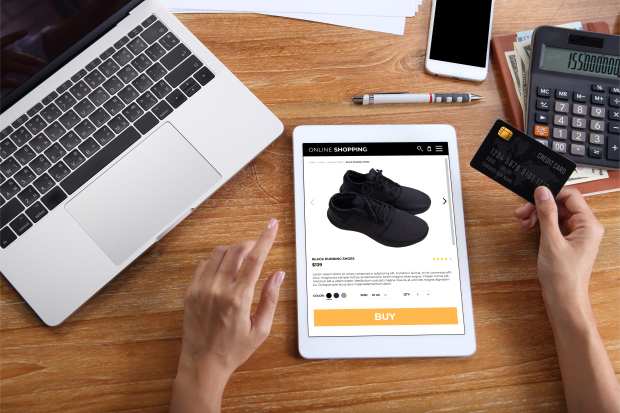2020 Buy Button Report: Some Use Cases Pushing It

When eBay first introduced the “buy it now” button way back in Y2K, it was designed for the impatient online shopper who couldn’t wait for an auction to end. These folks had to purchase that thing now. It didn’t take long for eBay and PayPal to figure out that they had a winner.
Fast forward 20 years and the buy button is an eCommerce staple, and few marketplaces could imagine business without it. Yet buy buttons don’t always trigger the impulses that marketers intend. Through four years of tracking this vital piece of eCommerce functionality PYMNTS has observed a number of unexpected things about buy button behavior.
In the new 2020 Buy Button Report: Customizing Implementation To Boost Conversion, the neck-and-neck race between Amazon Pay and PayPal to shave the most time off checkout (and convert at a higher rate) rages on, as it has done almost since PYMNTS established this index.
There are many more players now, and collectively, their experiments in checkout speed have revealed a game of seconds as online merchants make their buy buttons more appealing.
A Game of Seconds
Having analyzed the checkout processes of roughly 1,100 eCommerce sites over the past four years, PYMNTS evaluates how they compare by way of revenue, average ticket price and share of revenues generated by eCommerce. Used correctly, buy buttons are still the mini miracle they were 20 years ago. The 2020 Buy Button Report found that a well-implemented eCommerce buy button can cut online checkout times by nearly 40 percent on average.
If only it were that simple. “The extent to which buttons speed up checkout can change dramatically,” the report states, “depending on factors such as companies’ sectors, eCommerce sales revenues and whether their sites require customers to create guest profiles.”
“Buy buttons reduce mass merchant sites’ checkout times by as much as 54.1 percent, for example,” the report continues. “Different buttons also alter sites’ checkout speeds. Firms offering PayPal buttons experience 77-second checkout time decreases, while those offering Apple Pay buttons save users only 17 seconds. Even deciding between optional or mandatory profiles can affect buy buttons’ effectiveness.” The report delves into solutions around this.
As confusing as it can all be, the 2020 Buy Button Report clears up confusion around when, where and why buy buttons lead to higher conversions and happier customers. It also walks us through interesting hot spots and dead zones for buy button benefit, like the fact that buy buttons cut over a minute off mass merchant eCommerce checkout, but only cook five seconds off quick-service restaurant (QSR) orders. Buy buttons don’t have minds of their own, but what becomes clear in The 2020 Buy Button Report is that they don’t work magic universally.
Pushing Peoples’ Buttons
Maybe the buy buttons’ sensitivity to a series of factors is why, as the report tells us, “The number of merchants that offer at least one buy button has decreased since Q1 2018, falling from 54.9 percent to 49.5 percent in Q1 2020.”
However, the report continues, saying, “… the number of merchants that offer two or more buy buttons has increased for years. Our research shows that 24.6 percent of merchants provided two or more buy button options in Q1 2020, up from the 21.5 percent that did so in Q2 2019 and further up from the 19.1 percent that offered them in Q2 2018 and 17.8 percent that did in Q1 2018.”
For merchants that are driving action from it, the buy button is well worth doubling down on, whereas others are simply dropping them from online checkout entirely. Either way, the more a merchant knows about a customer the more likely a buy button will add value to that relationship. “Checkouts are fastest on retail sites that offer both buy buttons and optional user profiles. Shoppers spend 113.2 seconds to check out on these sites if they do not use buy buttons but only 60.8 seconds if they do. This means that buy buttons cut users’ checkout times by 52.4 seconds — 46.3 percent — on sites with optional user profiles,” the report found.
